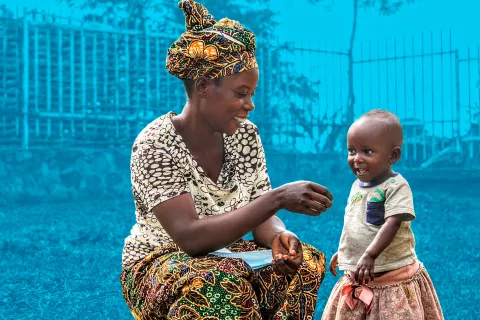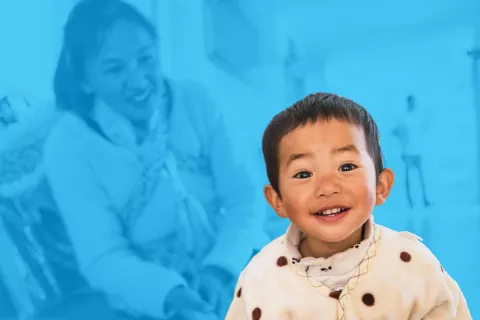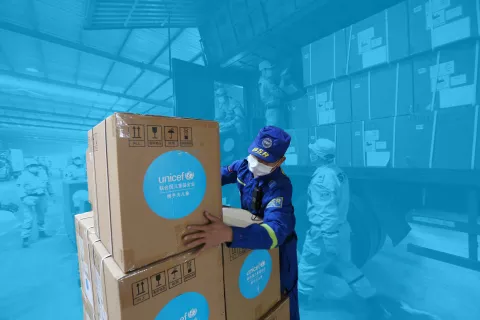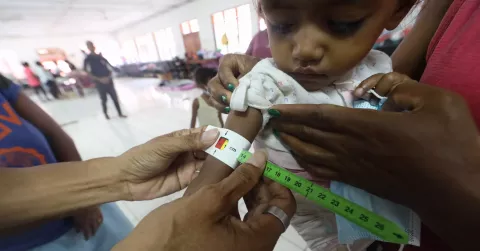Oxygen Concentrators During COVID-19
Oxygen access is a matter of life or death for vulnerable newborns and children.
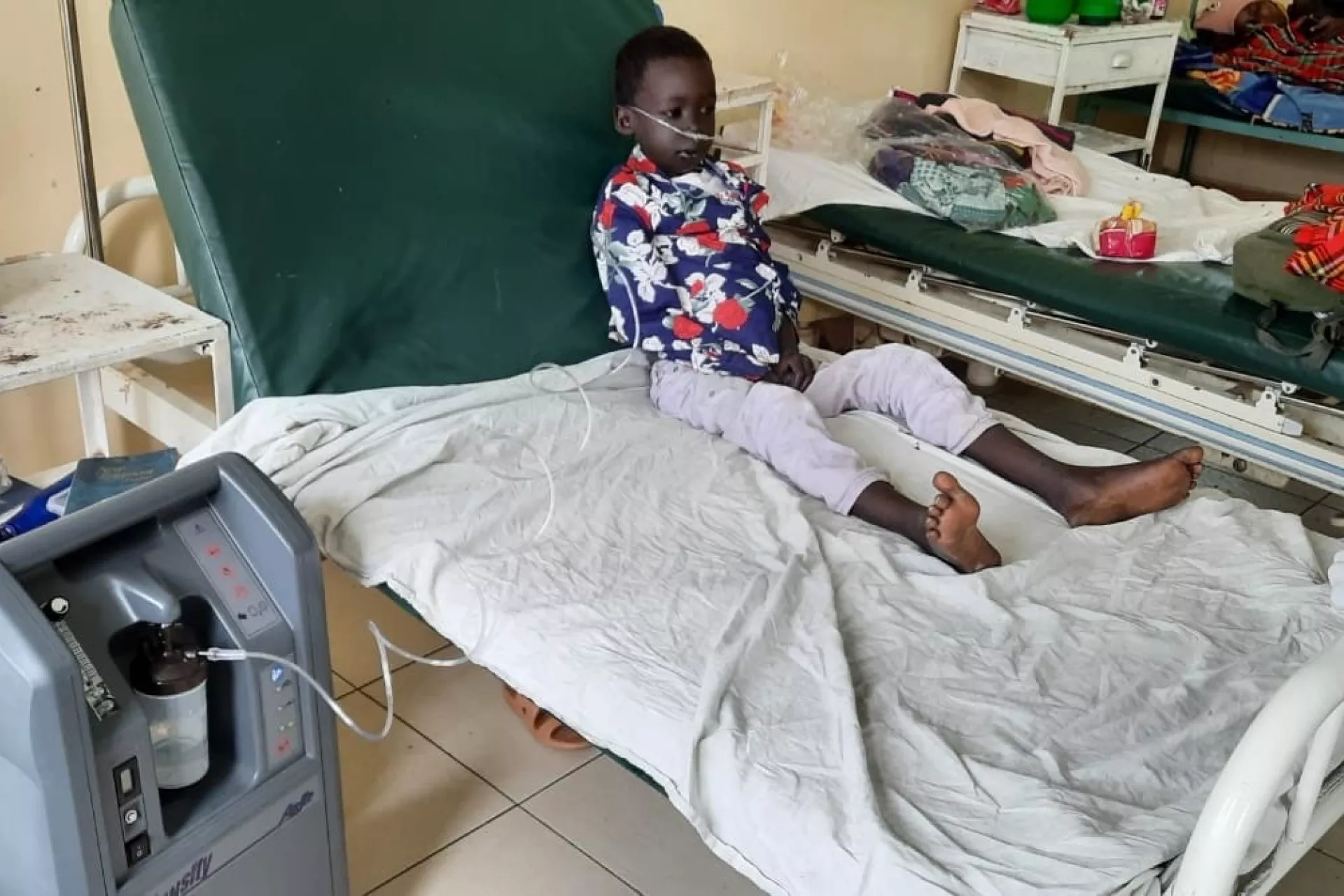
- Available in:
- 中文
- English
The COVID-19 pandemic has put unprecedented pressure on global supply chains and the sourcing of vital medical supplies. This includes oxygen concentrators, which can save the lives of both COVID-19 patients and newborn children across the world.
UNICEF is working globally to overcome challenges in the logistics, transportation, trade and pricing of oxygen concentrators. These efforts include working with governments around the world to consolidate demand, and working with manufacturers - including those from China - to establish long-term agreements on pricing of supplies, production capacities, and a geographically diversified supply base.
Why do oxygen and oxygen concentrators matter?
Oxygen is a lifesaving therapeutic medical gas for people suffering from severe pneumonia and other respiratory diseases, like COVID-19.
An oxygen concentrator is an electricity-powered medical device that first takes in air, removes nitrogen, and then delivers a continuous source of concentrated oxygen to a patient requiring respiratory support. They are convenient for users and health-care workers because they are easy to move. One oxygen concentrator can simultaneously serve two adults and five children.
Oxygen concentrators support the treatment of pneumonia in children - one of the key causes of death among children under 5 - and hypoxemia, which is a major predictor of mortality. Oxygen are also used in emergency obstetric (childbirth) care situations, surgery and anaesthesia.
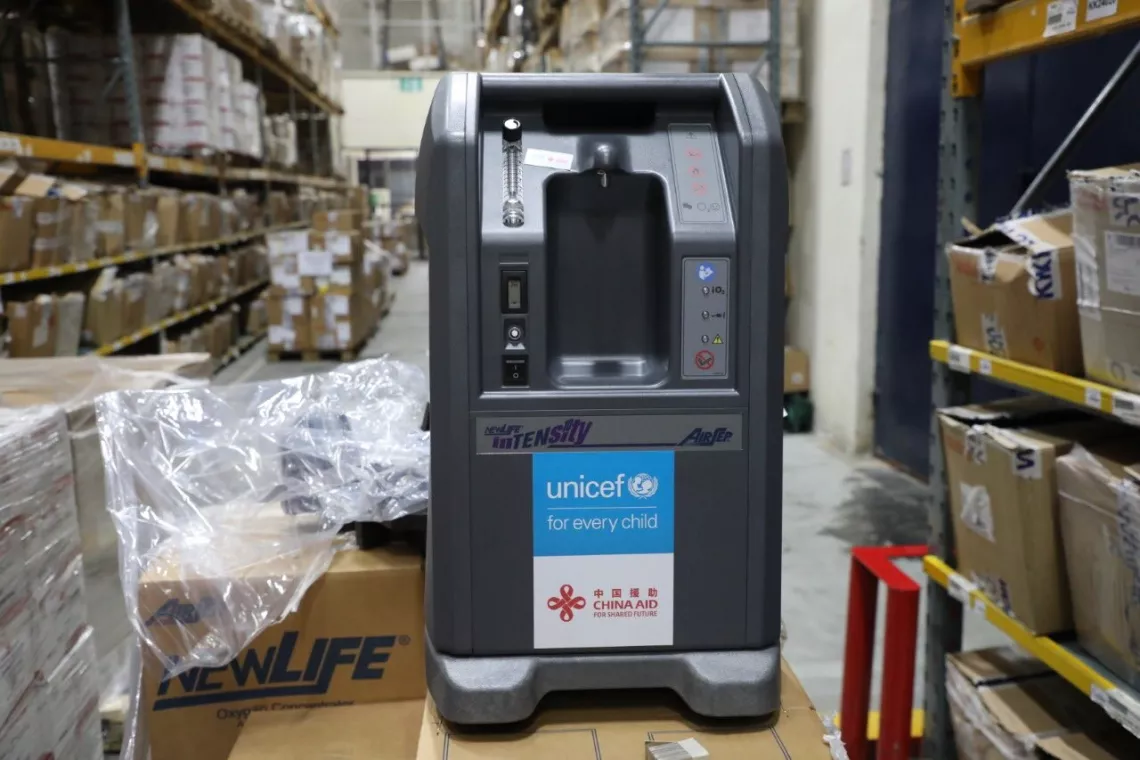
Respiratory support in COVID-19 patients
Approximately 15 per cent of COVID-19 patients are classified as ‘severe’ and require oxygen therapy, which involves a free-flow of oxygen through the nostrils.
Unfortunately, the COVID-19 pandemic exposed the oxygen gap faced by many low and middle-income countries. Oxygen therapy remains an inaccessible luxury for many ill children in the poorest countries beyond urban hospitals and private providers.
UNICEF’s procurement of oxygen concentrators, including from China
As of the end of July 2021, UNICEF has shipped 62,046 oxygen concentrators to 104 countries, over 46.29 million USD in total. Among which, 12,788 oxygen concentrators worth more than 7.82 million USD have been ordered from a Chinese trade company.
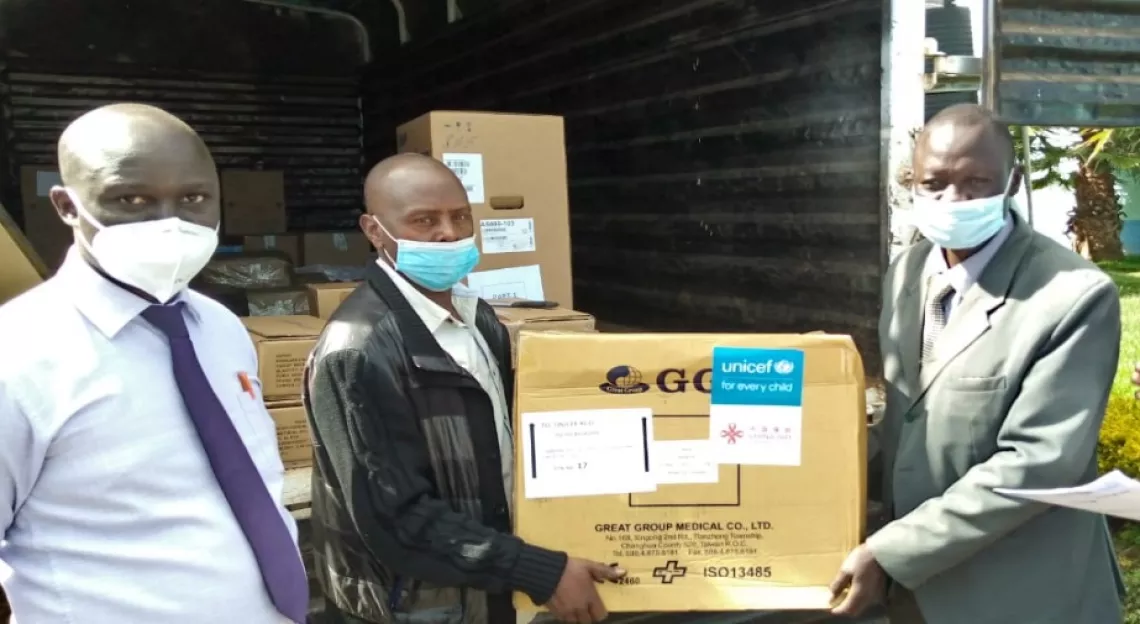
Oxygen concentrators in UNICEF projects
In 2020, UNICEF, in partnership with host governments and the China International Development Cooperation Agency (CIDCA), launched projects to improve maternal, newborn and child health (MNCH) in the Democratic Republic of the Congo (DRC), Ethiopia, Kenya, Niger, Nigeria, Sierra Leone, Sudan, and Zimbabwe. Oxygen concentrators are an essential MNCH supply.
- In the DRC, two oxygen concentrators were received in early September 2020. These will be used to improve the safety of deliveries in health facilities.
- In Ethiopia, maternal and newborn health technical assistants found that primary hospitals lacked key supplies and equipment for delivery of newborn intensive care unit services during supervision activities. Oxygen concentrators and other equipment were procured and delivered to project sites.
- In Kenya, 10 oxygen concentrators were procured and distributed to county health facilities.
- In Sierra Leone, oxygen concentrators were installed in a special care baby unit and the facility’s paediatrician, medical officers and nurses were trained in the equipment’s maintenance.
- In Sudan, supplies including oxygen concentrators were procured to support Saad Abu Eleila Hospital and Omdurman Maternity Hospital. The need for additional oxygen supply in the newborns’ ward of Omdurman Maternity Hospital was identified during a UNICEF Sudan and the Ministry of Health’s joint monitoring visit in July 2020.
In addition to the above MNCH projects implemented in partnership with the Government of China, UNICEF is working around the clock and around the world to make sure that life-saving supplies and equipment are reaching the most vulnerable populations. As an example, when COVID-19 reached the remotest parts of the Peruvian Amazon, UNICEF delivered 40 oxygen concentrators to Peru’s Ministry of Health, so that the Ministry could distribute them to local health care centres in Amazonas, Loreto and Ucayali areas, in which indigenous population reside. Indigenous communities are one of the epicentres of the pandemic in Peru.
Equipment such as oxygen concentrators - including those procured from China - can be the difference between life and death for someone suffering from COVID-19 and for some of the most vulnerable newborns and children.


